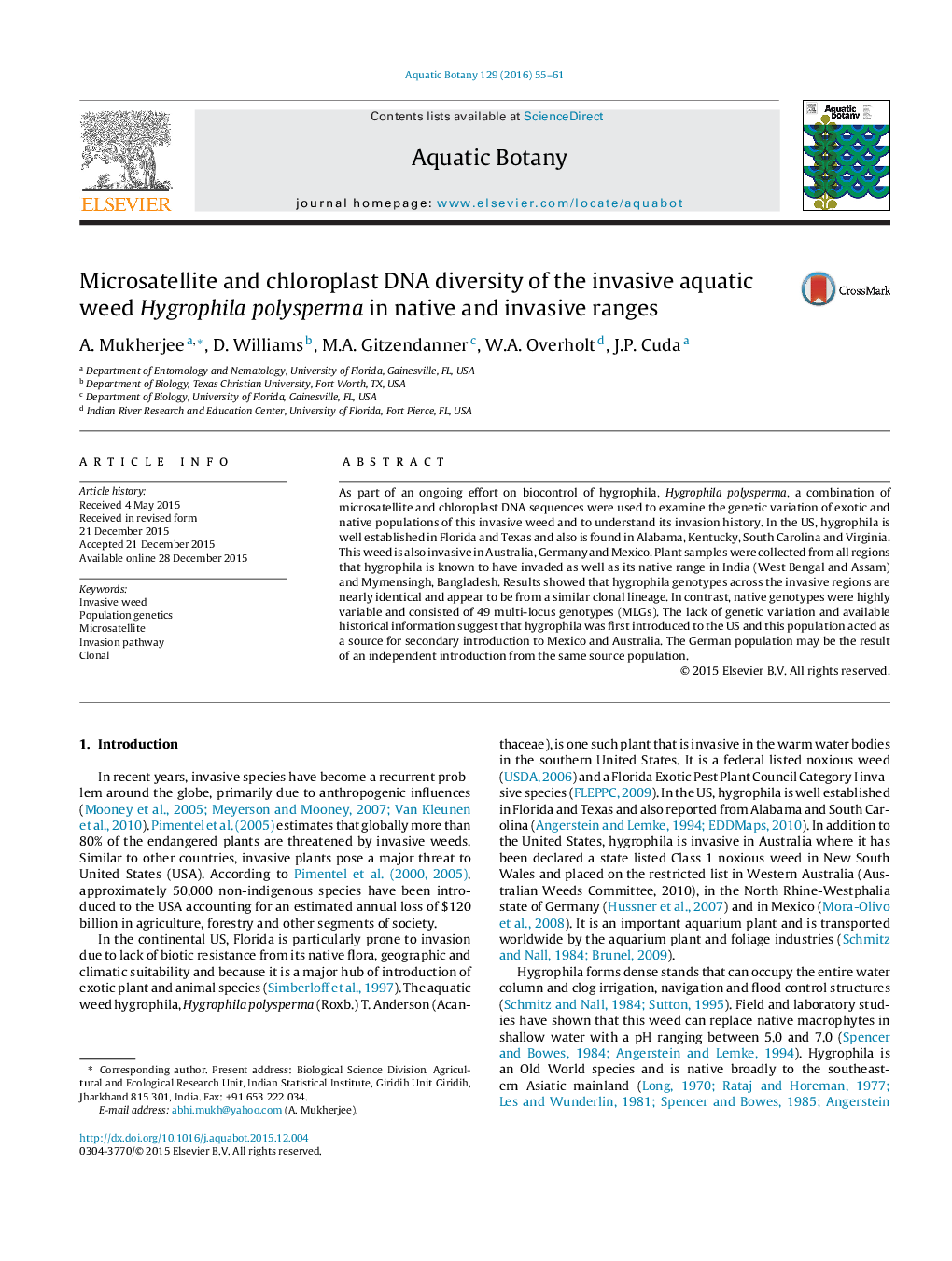| کد مقاله | کد نشریه | سال انتشار | مقاله انگلیسی | نسخه تمام متن |
|---|---|---|---|---|
| 4527620 | 1625813 | 2016 | 7 صفحه PDF | دانلود رایگان |

• Invasive populations of H. polysperma are of similar clonal lineage.
• We hypothesize that the first established invasive population was in USA.
• The US population was the likely source for introductions into Australia and Mexico.
• A German population was genetically distinct and may represent an independent introduction.
As part of an ongoing effort on biocontrol of hygrophila, Hygrophila polysperma, a combination of microsatellite and chloroplast DNA sequences were used to examine the genetic variation of exotic and native populations of this invasive weed and to understand its invasion history. In the US, hygrophila is well established in Florida and Texas and also is found in Alabama, Kentucky, South Carolina and Virginia. This weed is also invasive in Australia, Germany and Mexico. Plant samples were collected from all regions that hygrophila is known to have invaded as well as its native range in India (West Bengal and Assam) and Mymensingh, Bangladesh. Results showed that hygrophila genotypes across the invasive regions are nearly identical and appear to be from a similar clonal lineage. In contrast, native genotypes were highly variable and consisted of 49 multi-locus genotypes (MLGs). The lack of genetic variation and available historical information suggest that hygrophila was first introduced to the US and this population acted as a source for secondary introduction to Mexico and Australia. The German population may be the result of an independent introduction from the same source population.
Journal: Aquatic Botany - Volume 129, February 2016, Pages 55–61